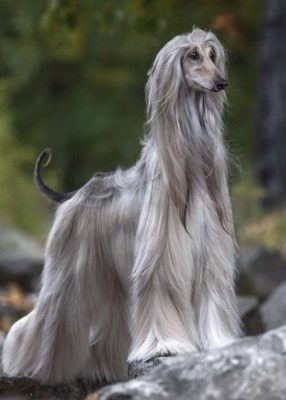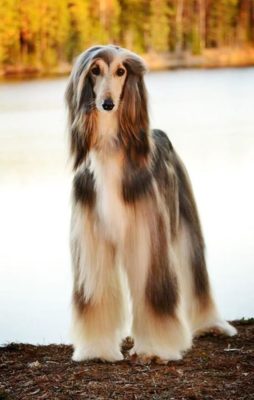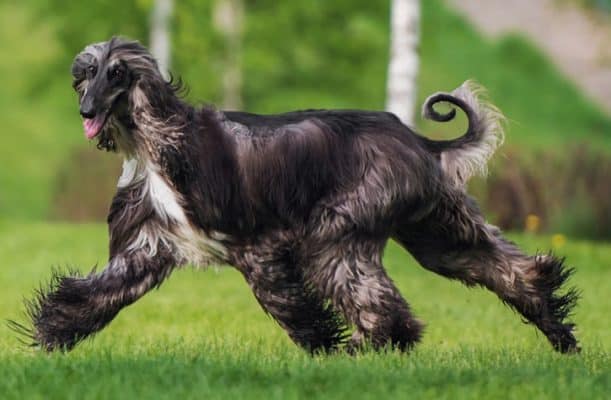Afghan Hound
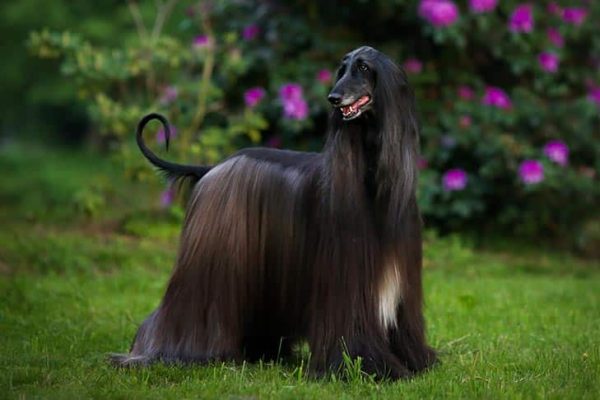
The Afghan Hound is usually a dog for one person or one family. Don’t expect this dog to greet your guests eagerly. Most likely, it will offend them with its indifference. Although some dogs may bark once or twice when a stranger enters the house, this breed is not a good guard dog.
Table of Contents
Breed Information
| Another Name | Tazi, Da Kochyano Spay, Sage Balochi, Ogar Afgan, Barakzai Hound, Eastern Greyhound, Pashtun Greyhound |
| Origin | Afghanistan |
| Height | Males 64-74 cm Females 61-79 cm |
| Weight | Males 23-34 kg Females 20-34 kg |
| Fur | Long hair |
| Color | Virtually any color, the most common are white, pale, red, black, black with tan, blue |
| Lifespan | 10-15 years |
| FCI Classification | Sighthounds |
| Group | Hunting dogs, dogs for children |
| Price | $800-1200 |
Breed Photos
Origin History
Some scholars claim that the Afghan Hound is the oldest purebred dog breed. An ancient myth says that a troop of Afghan Hounds represented the canine species on Noah’s ark. Because the breed predates written history by several thousand years, and because it was bred in some of the most remote places globally, its exact time and place of origin will never be known. We know that for centuries, the Afghans were rugged, fast-footed hunting companions and status symbols of royalty, tribal leaders, and aristocrats in the mountain kingdoms of Asia.
Afghan Hounds belong to a subcategory of the greyhound, dogs that rely on their panoramic vision and explosive speed to locate and pursue their prey. An integral part of Eastern culture at the dawn of civilization, the Afghan Hound, did not appear on the scene of Western history until the late 1800s. It was then that British officers returning from the British Empire’s farthest reaches introduced the breed to Europe. By the early 1900s, Afghans were the preferred breed of British nobles. The American Kennel Club registered its first breed in 1927, but it wasn’t until the early 1930s that the breed gained popularity with breeders and owners in the United States.
Appearance
The Afghan Hound as a whole should give an impression of strength and dignity, combining speed and power. This breed has a long skull, not too narrow, with a protruding occiput. A long muzzle with sharp jaws. The nose is preferably black.
Eyes mainly dark color, but the golden coloration is not excluded. Almost triangular, slightly slanting upwards from inner corner to outer corner. The ears are low set, set close to the head. The tail is not too short. The forelimbs are long, well set, muscled, and strong. The back is straight, muscular, medium length, slightly drooping.
One of the Afghan Hound’s main features is its coat, which should develop naturally, is very long and with a fine texture on the ribs, front, back, and sides. Afghan Hounds come in almost any color. The hair on the muzzle is short.
Character
The Afghan Hound is usually a dog for one person or one family. Don’t expect this dog to greet your guests eagerly. Most likely, it will offend them with its indifference. Although some dogs may bark once or twice when a stranger enters the house, this breed is not a good guard dog.
The Afghans’ independent mindset makes training difficult. This hound is generally not interested in food and does not have a strong desire to please as many other breeds.
Rough handling can cause this dog to become withdrawn or slightly hostile. Gentle handling, kindness, and patience work best with this breed.
Care
The Afghan Hound needs meticulous care because of its long, silky, and thick coat. You will have to brush your Afghan Hound every day and do a thorough brushing and grooming at least once a week. It includes removing numerous tangles and tufts in the fur individually and gently, using a fine-toothed comb, pin-brush, and smooth brush for Afghans. It will be easier if you buy your dog a special shampoo and conditioner before grooming.
Pay special attention to your armpits, the areas between your toes, and behind your ears. Scrutinize the ears because they are prone to infection because they are floppy. Brush your Afghan Hound’s teeth daily for good dental health. A house with a large yard is a great place to raise an Afghan Hound. If you live in an apartment, you will have to take them for a long walk every day.
Training
Afghans are intelligent dogs, known for their mischievousness and their ability to solve problems to get what they want. However, they are also known as one of the most difficult breeds to train. They do not lend themselves well to learning new commands. Training an Afghan requires time and patience, and as mentioned above, the breed does not respond well to an irritated or yelling owner. Professional obedience training, which includes socialization, is recommended from an early age.
Common Diseases
Afghan Hounds have a relatively long life span for such a large breed, about 12-15 years, and are generally healthy. As with all large, deep-chested dogs, owners need to recognize the symptoms of bloat – a condition in which the stomach fills with gas and cuts off blood flow to other organs. When this happens, it’s important to take your dog to the vet as soon as possible.
Afghan Hounds may also be predisposed to hip and elbow dysplasia, a condition in which the hip or elbow joints become deformed, eventually leading to lameness. Make sure your breeder has checked your puppy’s parents for this condition.
And, like other greyhounds, Afghan Hounds have very little body fat. They can be sensitive to anesthesia, so take your dog to a veterinarian familiar with the needs of greyhounds.
Nutrition
Outwardly, you can see that the Afghan Hound has a hollow belly. It indicates that the dog is not eating much. It is important to provide her with a proper diet, keeping a balance of proteins and fats. Dogs of this breed have long and strong paws, so the diet must necessarily include phosphorus- and calcium-containing products (seafood, chicken meat, various porridges, dairy products, eggs).
Your puppy should start with six small meals a day. As the dog gets older, the number of feedings can be reduced to two. It is important to provide your dog with constant access to drinking water.
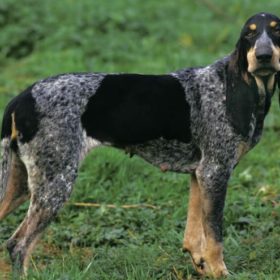 Petit Gascon Saintongeois
Petit Gascon Saintongeois Brittany
Brittany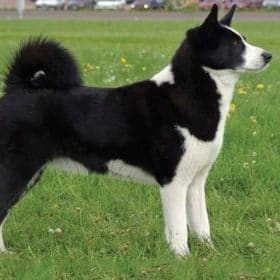 Karelian Bear Dog
Karelian Bear Dog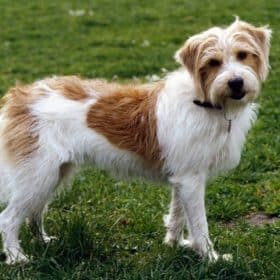 Kromfohrländer
Kromfohrländer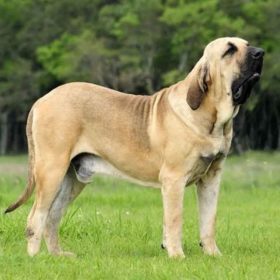 Fila Brasileiro
Fila Brasileiro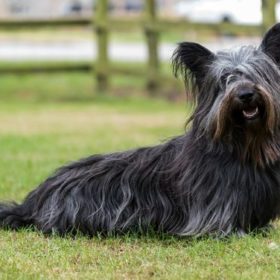 Skye Terrier
Skye Terrier